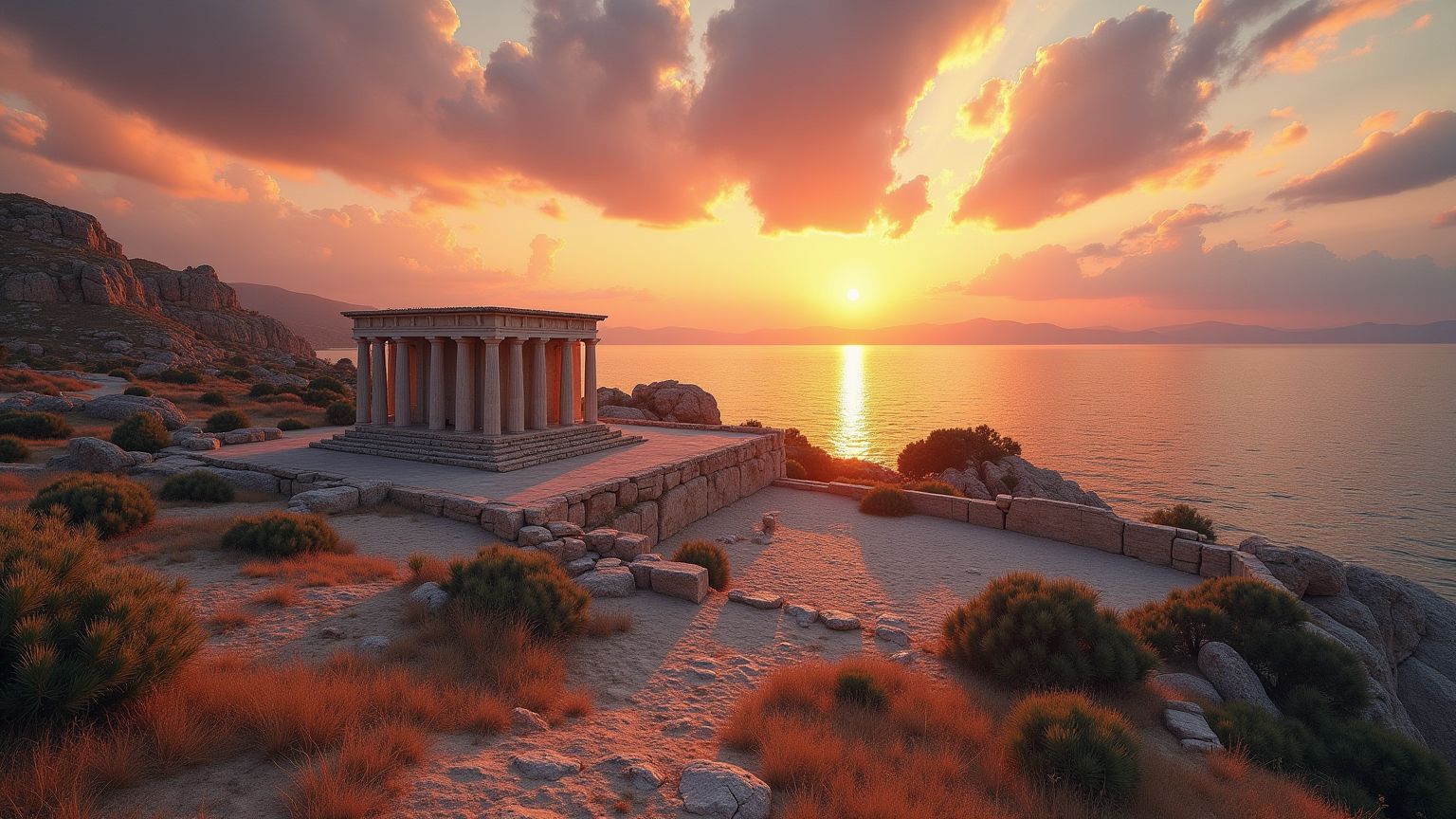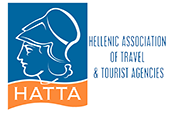Visiting the King Nestor Palace: A Tour Guide’s Perspective on Pylos’ Ancient Wonder
After fifteen years of trudging through Messinia's dusty archaeological treasures, I've got a confession: King Nestor Palace still makes my heart skip a beat. It's that hidden gem that somehow flies under the radar while places like Mycenae get all the glory.
Just a quick drive from modern Pylos, this Bronze Age beauty tells stories that stones elsewhere can only whisper.
What Makes the King Nestor Palace So Damn Special?

You know how most ancient sites require Olympic-level imagination? "See that pile of rocks? That was a magnificent temple!" Not at King Nestor Palace.
Here, the foundations speak for themselves. The layout practically grabs you by the shoulders and says, "Look, this is how we lived!" I've watched countless visitors' jaws drop when I tell them they're standing exactly where King Nestor once entertained Telemachus in Homer's Odyssey.
This 13th century BCE marvel isn't just some lonely building – it's an entire complex. King Nestor Palace served as both swanky royal pad and the administrative heart of western Messenia when Mycenaean civilization was crushing it.
Planning Your Visit: The Nuts and Bolts
Before I walk you through my favorite spots at King Nestor Palace, here's what you need in your back pocket:
Finding It: About 17km north of Pylos (that's Navarino to some), near the village of Chora. Your GPS won't let you down - King Nestor Palace is well-signposted.
Hours: Generally 8:30-3:30, Tuesday through Sunday. Summer months might stretch till 8pm, but do yourself a favor and check the Greek Ministry website before making the trek.
Damage to Your Wallet: €6 for grown-ups, less for seniors and students. Under 18s can strut in for free.
Timing is Everything: Want my insider secret? Hit King Nestor Palace before 10am or after 4pm. You'll dodge both the merciless midday sun and those tour groups that descend like locusts. April-May or September-October offers weather that won't melt your face off.
How Long: Most folks spend 1-2 hours wandering King Nestor Palace, though true history nerds might need longer.
The Archaeological Museum of Chora: Don't You Dare Skip It
Here's where tourists mess up – they breeze past the Archaeological Museum of Chora that's spitting distance from King Nestor Palace. Rookie mistake!
This isn't some dusty display case in a basement. It's a slick, modern museum housing the actual treasures excavated from King Nestor Palace – including that famous bathtub where Nestor supposedly scrubbed down Telemachus, technicolor wall paintings, and clay tablets with Linear B (basically Greek's great-great-grandparent).
Visit before or after exploring King Nestor Palace – doesn't matter which. But those gleaming artifacts, those daily life trinkets – they're the flesh on the skeletal ruins you'll explore.
Walking Through King Nestor Palace: The Grand Tour
Alright, let's dirty our boots with a proper walkabout of King Nestor Palace, just like I'd show you in person:
1. The Main Entrance and Courtyard
Step through the time-portal that is the main entrance and you'll hit the courtyard. Stop. Breathe.
Picture this space 3,300 years ago: messengers huffing after long journeys, merchants hawking exotic goodies from distant shores, farmers dropping off grain while trying not to stare at the palace folk. King Nestor Palace was buzzing with life, not this peaceful archaeological site you see today.
2. The Portico and Propylon
Moving on through King Nestor Palace, you'll encounter the propylon – not just a fancy door, but a "look how important I am" statement in limestone. The column bases still visible today at King Nestor Palace hint at the "wow factor" that slapped visitors in the face upon arrival.
3. The Throne Room Complex
The heart and soul of King Nestor Palace sits right here. The throne room isn't just well-preserved – it's practically posing for Instagram.
That circular hearth surrounded by four columns? That's where the magic happened. Against the right wall sat the throne itself – not some boring IKEA chair, but the power seat of western Messenia.
Look down near the throne area of King Nestor Palace and you'll spot a clay channel for pouring libations. Yeah, these kings didn't just rule – they played priest too. Talk about work-life imbalance!
4. The Archive Room
If stones could talk, this room would be screaming historical data. Archaeologists found over 1,000 clay tablets here at King Nestor Palace, covered in Linear B chicken-scratch.
Though the originals are vacationing permanently in Athens, knowing you're standing where ancient bureaucrats tracked everything from sheep counts to perfume recipes gives me goosebumps every time I visit King Nestor Palace.
5. The Domestic Quarters and Workshops
Beyond the state rooms, King Nestor Palace gets personal. Kitchen spaces, storage rooms with massive pithoi jars for wine and olive oil, and workshops where craftspeople sweated over palace-sponsored projects.
The wine magazine at King Nestor Palace is eerie – dozens of drinking cups found exactly where they fell when fire consumed the palace around 1200 BCE. It's like a Bronze Age Pompeii moment, capturing the palace's final happy hour.
6. The Queen's Hall and Private Apartments
Ladies had their own domain at King Nestor Palace. The Queen's Hall mirrors the main throne room but on a cozier scale. Nearby private apartments show these royals weren't roughing it.
King Nestor Palace boasted luxuries that would impress even today: vibrant frescoes, proper drainage systems, and – get this – what appears to be Europe's earliest flushing toilet. Talk about being ahead of the curve!
7. The Panoramic Viewpoint
Before leaving King Nestor Palace, drag yourself to the northeastern corner. The vista explains everything – fertile plains stretching out below, the distant Bay of Navarino glimmering. King Nestor Palace wasn't just pretty; it was strategically positioned to control both farmland and shipping routes.
Beyond the Main Palace: Extra Credit Explorations
If King Nestor Palace proper isn't enough to satisfy your archaeological appetite:
The Tholos Tombs
About a kilometer from King Nestor Palace sit several beehive-shaped tombs. While not as jaw-dropping as Mycenae's versions, these final resting places for Pylos' elite confirm what the main palace suggests – these folks had serious wealth and connections.
The Secondary Settlement
Surrounding King Nestor Palace was essentially a support community – the ancient equivalent of staff housing. Craftspeople, paper-pushers, and merchants lived in this "Lower Town." Less flashy than the main attraction, but crucial for understanding how Mycenaean society functioned beyond King Nestor Palace itself.
Straight-Up Advice From Someone Who Knows King Nestor Palace Inside-Out
After countless visits to King Nestor Palace, here's my unvarnished wisdom:
Wear shoes your mother would approve of: King Nestor Palace has uneven surfaces that flip-flops can't handle.
The sun is not your friend: Even with the protective roof over parts of King Nestor Palace, the Messenian sun shows no mercy. Bring water, sunscreen, and a hat.
Consider springing for a guide: Sure, the information panels at King Nestor Palace are decent, but a knowledgeable human can connect dots in ways that static displays can't.
Start with the mini-model: Near the entrance to King Nestor Palace sits a detailed model showing how this place looked in its heyday. Study it before wandering the ruins – your brain will thank you.
Develop a healthy floor obsession: Some of King Nestor Palace's coolest features – drainage systems, hearths, thresholds – are right under your feet. Keep those eyes down sometimes.
When Homer Meets Archaeology: Fact Meets Fiction
The tangled relationship between King Nestor Palace and Homer's epics adds another layer of intrigue. Though the palace burned centuries before Homer started spinning yarns, the parallels are striking.
When the poet describes Telemachus washing in a fancy tub, drinking from gold cups, and hanging out in a great hall with central hearth – he's describing features archaeologists actually found at King Nestor Palace.
Was Homer preserving genuine memories or just describing grand buildings from his own era? The debate rages on, but standing in the actual throne room of King Nestor Palace while recalling those passages? Pure magic.
Making the Most of Your Day: King Nestor Palace Plus...
King Nestor Palace deserves to be the centerpiece of your western Messenia adventure. I typically suggest pairing it with:
Voidokilia Beach: That perfectly curved beach below King Nestor Palace isn't just for postcards – it has a Mycenaean tomb perched above it.
Old Navarino Castle: Medieval fortress with views that'll make your smartphone camera weep with joy.
Pylos Archaeological Museum: Small but mighty, housing finds from the broader region around King Nestor Palace.
Pylos Town: After communing with ancient spirits at King Nestor Palace, treat yourself to seafood and people-watching in this charming modern town.
Final Thoughts: Why King Nestor Palace Deserves Your Time
After guiding countless folks through Greece's greatest hits, King Nestor Palace offers something increasingly rare – breathing room. No selfie sticks jousting for position, no tour guides shouting over each other.
King Nestor Palace reveals just how sophisticated these "ancient" folks were. Their hydraulic systems and organizational skills would put some modern operations to shame.
For families, King Nestor Palace bridges myth and reality in ways kids actually get excited about. "This isn't just a story – this is where it happened!"
Whether you're a history buff or just enjoy being somewhere that matters, King Nestor Palace delivers. Standing in that throne room, with the breeze coming off the Messenian Gulf, the line between past and present, between myth and history, gets deliciously blurry. King Nestor Palace isn't just another archaeological site – it's a conversation with ancestors who have more in common with us than we might think.
🏺 Discover Ancient Greece With Expert Guides
Transform your historical knowledge into unforgettable archaeological experiences
Historical Tours
UNESCO Archaeological Sites
Peloponnese Tours
25+ Local Experiences
Adventure Tours
Outdoor Activities








